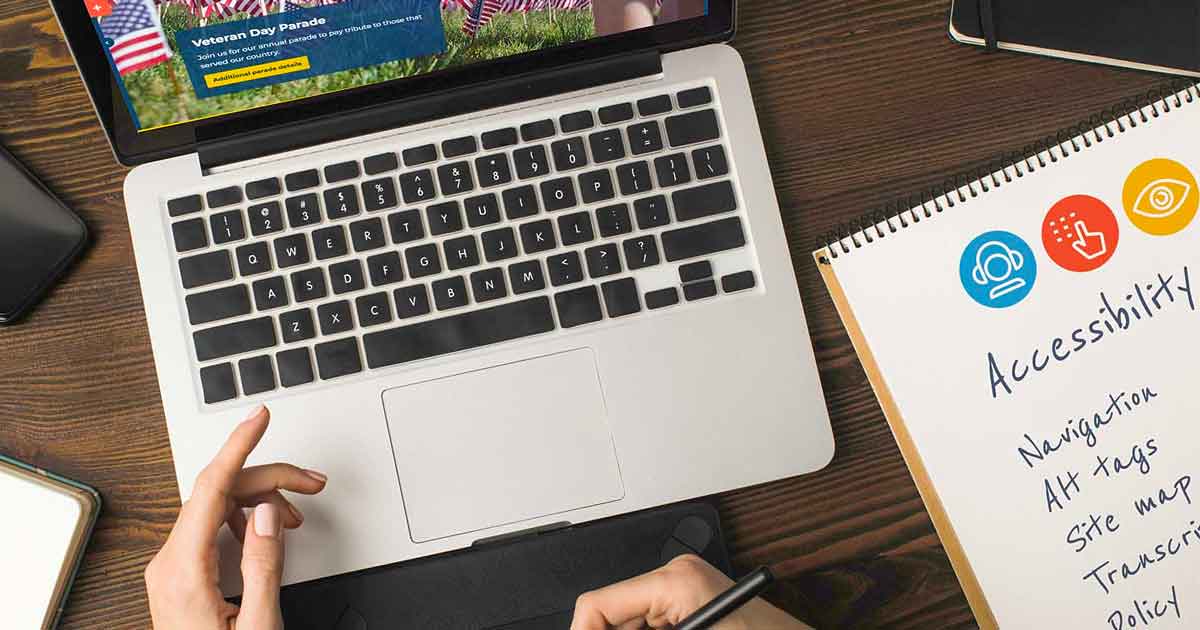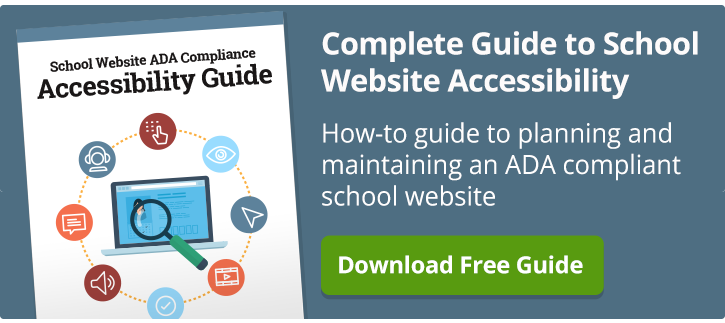As many school districts have decided on remote learning or some degree of it to begin the 2020-2021 school year, we're learning it can be a challenge for even the most organized and higher-level students. But have you considered how remote learning runs the risk of widening the gap even further for students with disabilities?
According to the Educating All Learners Alliance, 7.5 million students in special education are currently (affected) by the pandemic. EALA is committed to helping the 1-in-13 students who need special help during this time. There are several steps your district should take to ensure that all students can learn and grow while working at home, even the most vulnerable.
1. Be creative
In this unprecedented time, creativity, flexibility and grace are the keys to success. According to the US Department of Education, “If an LEA continues to provide educational opportunities to the general student population during a school closure, the school must ensure that students with disabilities also have equal access to the same opportunities, including the provision of FAPE.”
The DOE, however, does not specify HOW the needs of the IEP or 504 plan need to be met.
Secretary of Education Betsy DeVos tells us, “This is a time for creativity and an opportunity to pursue as much flexibility as possible so that learning continues. It is a time for all of us to pull together to do what’s right for our nation’s students.”
Instruction for all students with IEPs and 504 plans MUST take place, but the DOE does not mandate how. Educators need to use their
Teachers cannot just count on a Zoom meeting to meet every student’s needs.
creativity to dig deep and individualize their learning plans like never before. Districts need to support them by purchasing online learning apps that are accessible for all students, providing professional development and ensuring that all legal protocols are followed.
Teachers cannot just count on a Zoom meeting to meet every student’s needs. Other services at home include online instruction modules, personal phone calls, and even home visits. Special Education Degrees has put together the Top 12 Websites for Children with Learning Disabilities to help parents and teachers best help their students.
2. Support the families
A close connection between school and family has always been important, but never more so than during remote learning. Since parents will need to do much of the hands-on learning with their children, supporting families is another key to success for students with disabilities.
Educators can ease the transition by giving families plenty of training for the platform you are using, and giving them notice of assignments well in advance. Some teachers have made training videos so their families can see the platforms and apps in a more personal way to better understand them.
According to Educational Leadership, “To support students, we must connect with them and their families to learn more about their resources, priorities, and concerns. So our first task is to reach out to families to build relationships and find out how they're doing as a family.” Once educators know more specifics about what is going on in a student’s home, they can better tailor instruction to meet the student’s needs.
3. Focus on important learning outcomes
Let’s face it, not every learning outcome is created equal. Along with the creativity of educators, some learning outcomes may need to be pared down or manipulated during remote learning.
Meeting with a vertical team to determine the most vital lessons is helpful. Districts can assist in this process by providing time for teachers to work within and across grade levels. This is true to help general education students, but even more so for students with disabilities. By ensuring that these students are mastering the most vital learning outcomes, time can be focused on what is truly important and students and teachers will not be stretched so thin.
4. Ensure students can access the content
Online learning for students with disabilities can be tricky. But there are some quick tools that can help them stay on track. Ensure all students can access your platform, even if they use assistive technology. Navigating the keyboard, being able to magnify information, and using closed captioning are all examples of tools that help students with disabilities.
Universal Design for Learning and CAST can help your team make sure that all students can learn. UDL is a framework that uses cognitive neuroscience to best implement flexible learning. Not only would this benefit students with disabilities who are learning remotely, but general education students as well.
Being digitally accessible for all students means that, “All users can navigate, perceive, understand, and interact with content. Content considers the needs of individuals with physical, visual, speech, auditory, neurological and cognitive disabilities.” This point bears repeating, because if students cannot even access content, they will not be able to learn it. Teachers will need to spend some time training students and their families on the use of technology and how it can be most easily accessed for their individual needs.
5. Make room for socialization
Even in a time of pandemic, educators still must focus on educating the whole child. The tendency might be to work on IEP goals in a vacuum, but that will be disastrous to a child with disabilities who is already isolated at home.
The Washington Post recently reported on Allison Wohl, whose son Julian has Down syndrome and just completed the fourth grade. She touts the idea of social interactions like a lunch bunch. “The benefits of these types of experiences, especially for students with intellectual and developmental disabilities, are immeasurable,” said Wohl.
Again, creativity is the key. Learning math and reading facts are not always the most important elements of school, and in times of uncertainty, students will need their friends even more. “The social groups students had in person can likely continue online or via phone. For students who have limited access to technology, we can arrange "pen pals" for exchange of letters, drawings, and photos. Receiving a real letter from a friend can be novel and exciting in 2020,” said Educational Leadership.
6. Utilize a website
In order to be compliant with state and national guidelines in educating every student, like anything else, your work starts at home. Conduct an audit of your website to make sure that your website is in compliance and easily accessible for all.
All forms have to be compliant as far as fonts, and don’t forget the pdfs, which often are difficult to access. Videos on your website should offer closed captioning as well. Having an accessibility coordinator listed on your website also gives parents a specific place to go to help them if they are struggling with learning issues.
By making sure that students can connect with their friends and the technology necessary to learn, educators can protect the needs of all students. A strong website can be a first line of defense for a district, and help with the communication flow.
Remote learning for one and all
Even as teachers and students still struggle to dig out from the detritus caused by the frantic remote learning of the spring, many school districts have moved ahead with remote learning – or some hybrid of it. As we all work hard to do the most good for the most students, let's not let those students, parent of students, and staff with disabilities get lost in our remedies.
Districts need to set their educators up for success, by providing the tools and professional development they need to ensure that all students with disabilities have access to a solid remote education.
Remote learning will not be easy, but all students deserve a chance to learn, and the outcomes will definitely be worth it.
In what direction does your district need to move first to ensure accessibility for all students?
Topics: Website accessibility School Districts Private schools

About the author
Kathyrne Bradesca is a freelance writer from Cleveland, Ohio, and has been a junior high and high school teacher for the past 24 years. She is a member of the National Writing Project who understands the power of words. When she is not writing or teaching others to write, she enjoys hiking with her 3 teenagers, gardening and reading.
.png?width=64&height=63&name=Group%20(4).png)
.png?width=66&height=64&name=Group%20(5).png)
.png?width=56&height=60&name=Group%20(6).png)
.png?width=66&height=52&name=Group%20(7).png)
.png?width=56&height=56&name=Group%20(9).png)
.png?width=59&height=52&name=Group%20(10).png)


